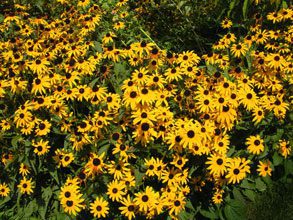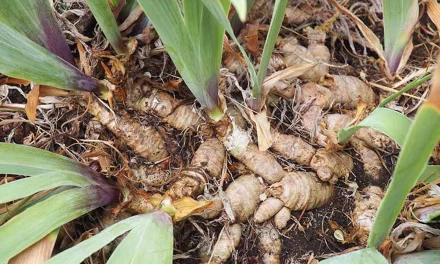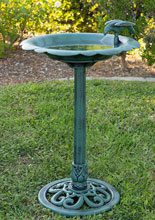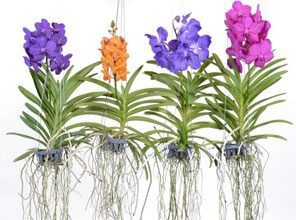 Christmas is weeks past and there are still a few reminders hanging around waiting to be put away, but like dust on my furniture, they’ve been around for so long I hardly notice them. After the holidays, I just had no oomph left to do anything about either. Sigh. I’m in the Doldrums.
Christmas is weeks past and there are still a few reminders hanging around waiting to be put away, but like dust on my furniture, they’ve been around for so long I hardly notice them. After the holidays, I just had no oomph left to do anything about either. Sigh. I’m in the Doldrums.
‘Doldrums’ is the maritime name for the calm winds near the equator. Calm winds are good, right? Not if you’re in a ship whose only means of propulsion is a sail.
Common use says ‘Doldrums’ expresses boredom and ennui. Remember when your mother’s response to “I’m bored’ was “Clean your room”? Well, I’m bored and I don’t want to clean my room. There’s nothing much going on in the garden and I’ve already ordered more seeds and plants from the catalogs than any reasonable person should. I’m definitely in the Doldrums. Maybe you are, too?
But here’s something to do to get you out of the Doldrums and into a green mood. Take yourself to your local box store and poke around in the house plant department. Most box stores take pretty good care of their house plants, and they’ve even expanded the department to include some unusual plants. For example, Vanda orchids have finally made it into the mainstream of retailing. Vandas are among the most beautiful of orchids, displaying a saturation of color seldom found in other varieties. Deep rich blues and purples are favorites, although yellows and pastels can be found as well.
Vandas are the orchids with those long, long bare roots that hang down from tiny baskets. There is little soil in the baskets; just some bark chips or charcoal, usually. The roots can also just be put in tall, soilless jars, which will help retain humidity.
The secret to keeping these beauties healthy is hydration. Spray and soak hydration. Since they have no soil around those long roots, they can quickly dry out and desiccate. For humidity, my Vandas hang in front of my bathroom window so the roots can be given a spray several times a week with a very weak solution of fertilizer. After keeping this up all winter, when the night-time temperatures are reliably above 50 degrees, they go outside to be hung in a tree where they are protected from direct sunlight, but get a good spray from the irrigation system now and then. When I remember, (about three or four times when they’re outside) they’re taken inside and the roots are soaked in a bucket of fertilized water for about a half hour, then taken back outside again.
There they spend several months, requiring little from me, other than to remember to take them back inside before the first freeze. Easy peasy.
While you’re in the house plant department, check out the Tillies. They are the new darlings of  house plants. Tillandsias. We used to call them Air Plants, but they are a far cry from the dried out looking things we pinned on our bedroom curtains. These are exotic and beautiful, some looking like rare creatures from the sea. But they do require more than just air to live and thrive in a home environment. Like orchids, they are epiphytes which, in the wild, get all their needs from the atmosphere. But not the atmosphere in my house or yours.
house plants. Tillandsias. We used to call them Air Plants, but they are a far cry from the dried out looking things we pinned on our bedroom curtains. These are exotic and beautiful, some looking like rare creatures from the sea. But they do require more than just air to live and thrive in a home environment. Like orchids, they are epiphytes which, in the wild, get all their needs from the atmosphere. But not the atmosphere in my house or yours.
However, their versatility makes them ideal house plants. They tolerate a wide range of temperatures, from about 50 to 90 degrees. Bright, filtered light is best, and they shouldn’t be grown in containers which hold water. Glass globes are popular containers, but you need to be mindful that they never collect water. Tillies can be mounted on just about any surface; shells, driftwood, bark, ceramics, etc., but remember that they must be able to be soaked periodically. In fact, Tillies require the same care as Vanda roots; regular misting and periodic soaking.
Many of these Tillies have beautiful flowers which last for weeks. They’re not borne on stems as such, but spring from growing tips on the plants themselves.
Like cacti. The flowers of most Tillies are richly colored; often different colors on their separate parts. Oh, and just FYI; Spanish Moss is a Tillandsia!!
But don’t leave the department without looking at the really big plants. Nothing evokes a tropical look like plants with big leaves. Know why? Well, jungle plants rarely are in full direct sunlight, and the bigger the leaf, the less sunlight they need for photosynthesis.
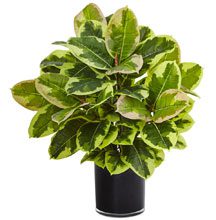 Even in a small room, one large plant will take up less visual space than many fussy small ones. It will clean the air better, too. Bright, indoor light is ideal for many tropical plants. Pick a spot for your big plant, and plan on leaving it there for its lifetime. Once they settle in and feel at home, many will sulk if they’re moved to another room. Some will drop all of their leaves in protest and in extreme cases, just die. Perhaps leaving home breaks their hearts.
Even in a small room, one large plant will take up less visual space than many fussy small ones. It will clean the air better, too. Bright, indoor light is ideal for many tropical plants. Pick a spot for your big plant, and plan on leaving it there for its lifetime. Once they settle in and feel at home, many will sulk if they’re moved to another room. Some will drop all of their leaves in protest and in extreme cases, just die. Perhaps leaving home breaks their hearts.
So . . . if you don’t live close to a botanical garden or have a greenhouse, box stores are a good cure for winter blues and blahs. And you can pick up a few lightbulbs and a replacement belt for your vacuum cleaner while you’re there.

